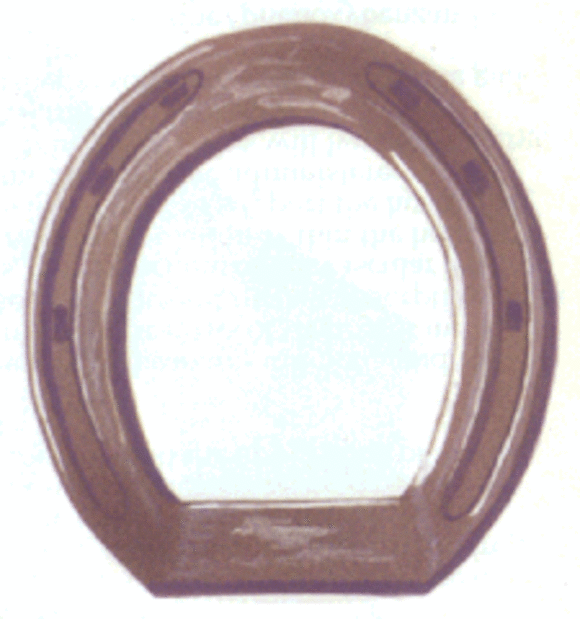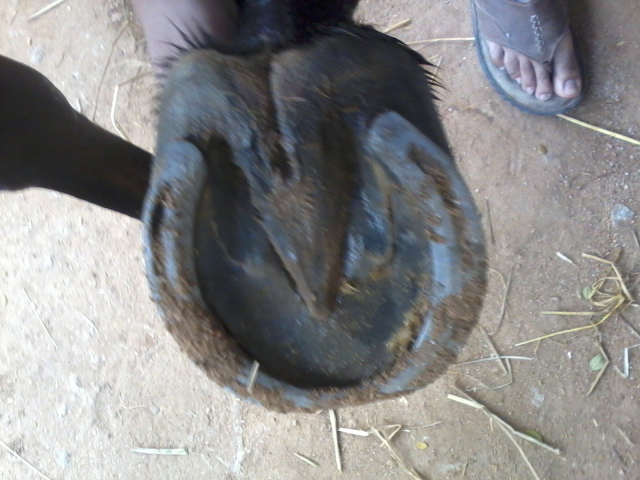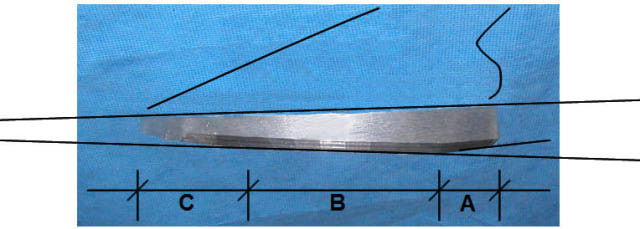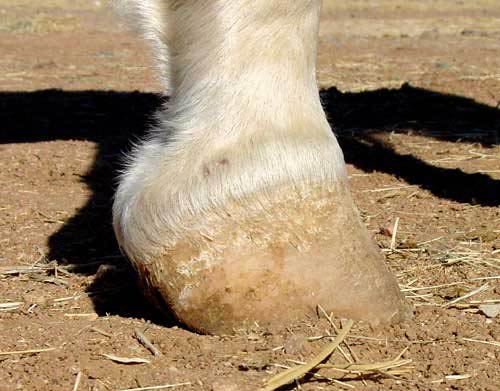QuestionHow can I tell if my Farrier is doing a good job of shoeing my horse? Specifically, he seems to do a lot of rasping after his nails on the shoe. I've heard it is incorrect to "fit the hoof to the shoe"
AnswerThanks for the question Craig. I'd like to answer this in 2 parts:
1. You are absolutley correct that a horsehoer should NEVER rasp or shape the hoof to the shoe. We call that "cowboy shoeing" in my neck of the woods and when I see it I want to scream. The correct way to shoe a horse is to form the shoe to fit the hoof correctly and then nail it on.
2. Now that being said don't be to quick to dismiss your shoer as unskilled or sloppy. When I shoe a horse I shape the shoe to match the horse's WHITE LINE after the hoof wall has been trimmed to the correct length. Often times at this point in the shoeing process there will still be a little extra toe or quarter that has flared out and needs to be rasped away. When this is the case I will drive one nail on each side to secure the shoe and then bring the foot forward and rasp away the excess flare. Again all I am doing is removing any flares OUTSIDE the white line. This is key. To fully answer your question here is a quick checklist that a laymen can use to judge the quality of a shoeing job:
1. Is the hoof trimmed in balance? (viewed from front, side, and back. Google "XYZ hoof balance" to get an idea of what this looks like)
2. Does there appear to be any gaps between the shoe and the ground surface of the hoof wall? (this is common in unskilled shoers and most often appears around the quarter area and is nicknamed "gutting the quarters")
3. When the hoof is viewed from the sole surface does the shoe appear to be rotated? (in other words the center of the shoe should be inline with the tip of the frog)
4. Also, from the sole surface do the nails heads appear to be firmly seated in the crease and do the number of nail heads correspond to the number of clinches? ( you'd be surprised how many shoers leave in driven nails that didn't pop out of the hoof wall...shameful)
5. Speaking of clinches, they should appear about 3/4" to 1" above the ground surface. Too low is not secure and too high runs the risk of a close or hot nail. A straight line of clinches is nice but as long as they are in the ball park the shoe is secure and thats all that clinches are supposed to do.
6. Again, from the sole surface is the shoe ONLY touching the hoof wall and nothing else? (a shoe that is pressing against the frog is a sure ticket to lameness)
7. Is there a slight bit of shoe outside the heel area to allow for expansion?
8. Finally, when viewed from the side does the toe follow a straight line from above the coronet to the ground? ( sometimes you will see a sudden, almost vertical, drop about an inch from the ground. This is called "dubbing the toe". This is what you were referring to originally and is huge Horseshoeing NO-NO. An unskilled shoer might put on the wrong size shoe or allow the shoe to slip back during the nailing process and then rasp off the toe to make the shoe appear to fit properly.) Based on your question I would check that last point first to determine if your shoer is short changing you and your horse.
Hope that helped and good luck
Seth

 eggbar shoes on horses
Question
bar shoe
hello sir, when can i use egg
eggbar shoes on horses
Question
bar shoe
hello sir, when can i use egg
 Barefoot Rehab
QuestionBugsy.jpg
QUESTION: My 13-year-old Appen
Barefoot Rehab
QuestionBugsy.jpg
QUESTION: My 13-year-old Appen
 flat or concave sole
Question
flat feet or concaved
hello sir, may i
flat or concave sole
Question
flat feet or concaved
hello sir, may i
 wedge shoes on horses
Question
wedge shoe
hello sir, may i know when t
wedge shoes on horses
Question
wedge shoe
hello sir, may i know when t
 horse with high heels
Question
high heels
hello sir. if i buy a raceho
horse with high heels
Question
high heels
hello sir. if i buy a raceho